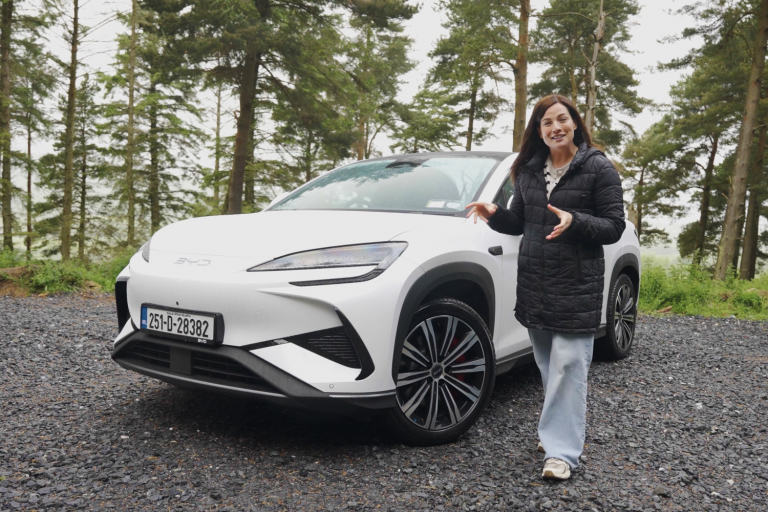Jeep and cheerful: the Compass SUV is well equipped and priced but it’s no match for the best on the road
Published on 2 October, 2022
Overview
Jeep is a brand so synonymous with off-roaders and SUVs it’s become a term that spans anything from cars that can plough through mud and snow to faux off-roaders with rugged good looks and plastic cladding.
In March of this year, Carlos Tavares, the chief executive officer (CEO) of Stellantis — the group Jeep is now part of — unveiled images of the first 100pc electric Jeep due here next year.
In the meantime, the world’s oldest sports utility vehicle brand has been slowly embracing electrification with plug-in hybrid models joining the line-up, including our test car this week, the Jeep Compass 4xe.
The chunky exterior, wheel arches and traditional seven-slot grille are a nod to the brand’s heritage while modernising tweaks include a revised front bumper and new distinct fog-lamp housing. And Jeep customers get plenty of options as each of the trim choices — Night Eagle, Upland, Limited, S and Trailhawk — comes with a distinct exterior look.
The entry-level Night Eagle comes with 18in gloss-black alloy wheels and roof rails, while our test car, the elegant S version, came with metallic finish, body-colour bumpers and new multi-spoke 19in alloy wheels. The off-road-focused Trailhawk trim features a specific grille treatment, body-colour fog-lamp bezels, a more noticeable skid plate and specific 17in alloy wheels.
Review: Suzuki’s Swace is a reliable family car promising low running costs – and it has a twin
Review: The Volkswagen ID.5 — an ID.4 but with a curved rear body shape and a bigger price tag
Inside, the Compass is well suited to family life and the high seating gives good visibility. There’s plenty of room for front and rear passengers and the 420-litre boot is enough for those road-trip adventures. All models come with a 10.1in central touchscreen running Jeep’s new Uconnect 5 infotainment system plus a 10.25in digital driver’s display that has now moved to the middle of the dashboard, making the layout sensible, if a little dated.
Under the bonnet of our test car is a 1.3-litre turbo petrol engine that’s paired with an electric motor and an 11.4kWh battery, which should provide enough power for around 50km of zero-emissions driving and can be fully charged in about four hours. There’s also the option of a 1.5 litre MHEV (mild hybrid).
On the road, it’s easy to drive and the steering is light. While rivals offer better comfort and refinement, it does handle well for an SUV. It’s also a little thirstier than official Jeep figures would suggest, but it does come with qualities intrinsic to the brand, such as all-wheel drive, so it’s capable of handling more than just the rough terrain you are likely to encounter on a rush-hour dash through traffic.
Prices for the Compass range start at €43,995 and from €49,995 for the PHEV models. Rivals include the Ford Kuga plug-in hybrid (€43,322 ), Toyota RAV4 plug-in (€54,170), Kia Sportage PHEV (€46,000), Hyundai Tucson PHEV (€42,295 ), and Volkswagen Tiguan PHEV (€52,205).
Jeep is a company that has struggled to attract Irish buyers but fresh styling and the addition of a plug-in hybrid widens the appeal of the Compass. It’s well priced and offers a decent level of equipment but competition in the compact SUV market is the toughest and the Compass is unlikely to lure buyers from rivals.
Rating: 3/5
Under the bonnet
Jeep Compass S 1.3 GSE PHEV eAWD
Starting price:€43,995; (tested model, €54,995)
Engine:1.3-litre petrol engine and electric motor driving all wheels
Transmission:Six-speed automatic
Co2/Motor Tax: 45g/km/€140
Economy:1.9litre/100km
Electric range:50km
Review: The Volkswagen ID.5 — an ID.4 but with a curved rear body shape and a bigger price tag
Latest Reviews

Rock n Roll Star - Defender partners with Oasis Live

GEV Technologies Powers Smarter EV Charging for Fleets and Businesses

BYD Sealion 7 Video Review